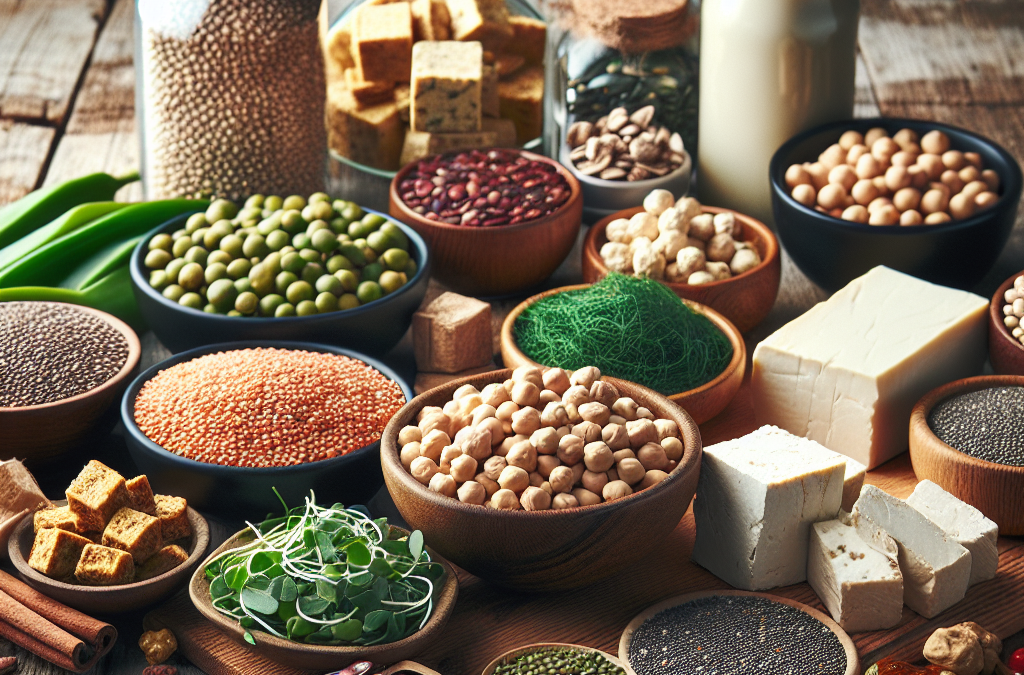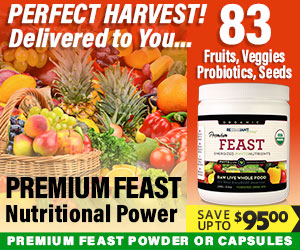1. Legumes and Pulses
Understanding Legumes
Legumes, such as lentils, chickpeas, and beans, have been staples in many diets around the world for generations. Personally, I’ve found them incredibly versatile in my daily meals. They are packed with protein and fiber, making them an ideal choice for anyone looking to maintain a balanced plant-based diet.
What I love most about legumes is their adaptability. You can toss them in salads, blend them into smoothies, or cook them into a hearty stew. Each type of legume has its unique flavor and texture, making meal prep exciting and diverse!
Besides being protein powerhouses, legumes offer tremendous health benefits. They’re loaded with vitamins and minerals, help regulate blood sugar levels, and keep you feeling full longer. Adding legumes to my meals has definitely changed my energy levels throughout the day.
Cooking with Pulses
Cooking with pulses can be a game changer. Dried beans and lentils might seem daunting, but once you get the hang of it, they’re so easy to incorporate into your meals. When I first started, I found that soaking dried beans overnight made all the difference in cooking time and texture.
You don’t always have to use dried pulses, though. Canned varieties are incredibly convenient and just as nutritious. I often have a few cans of chickpeas and black beans in my pantry for a quick protein fix. Just drain, rinse, and toss them into your dish!
Experimenting with different recipes is half the fun. I’ve made everything from classic hummus to spicy bean tacos. The possibilities are endless, and you can customize with your favorite spices and herbs for a flavor explosion that will impress anyone!
Picking the Right Pulses
Selecting high-quality legumes is essential for the best taste and nutrition. When I shop for legumes, I always check for organic options. Organic legumes ensure that you’re avoiding pesticides and other chemical additives that can creep into our food system.
Look for vibrant colors and firm textures when choosing your legumes. Dull colors often indicate older stock, which may not taste as good or provide the same nutritious benefits. Local farmer’s markets can be an excellent resource for fresh organic legumes!
Lastly, don’t underestimate the role of variety in your diet. Experiment with lesser-known legumes like adzuki beans or black-eyed peas; they all have unique flavor profiles that can really spice up your meals.
2. Nuts and Seeds
Nutritional Powerhouses
Nuts and seeds are a protein lover’s dream! They’re also full of healthy fats, vitamins, and minerals. Personally, I can’t go a day without throwing in a handful of nuts into my snack rotation or breakfast smoothie.
Walnuts, almonds, chia seeds, and hemp seeds are some of my personal favorites. Chia seeds, for instance, are not only great for protein but also packed with omega-3 fatty acids, which are fantastic for heart health.
One thing I love about nuts and seeds is their delightful crunch. Whether it’s on top of my oatmeal or added to a salad, they provide the perfect texture contrast while delivering those essential nutrients.
Incorporating Nuts into Meals
You can easily incorporate nuts in so many ways. For me, it all starts with a good nut butter. I whip up almond or peanut butter to spread on toast or blend into smoothies—it’s such an easy way to boost protein intake. Plus, who doesn’t love nut butter?
Don’t be afraid to sprinkle nuts over dishes or blend them into sauces for an extra dimension of flavor. I once made a fantastic pesto using walnuts instead of traditional pine nuts, and it was a game changer!
For the adventurous chefs out there, I’ve also experimented with nut cheeses. Fermenting cashews creates a creamy, cheese-like spread that’s perfect for crackers or veggies. You might just impress a few non-vegans with this one!
Choosing the Right Varieties
When selecting nuts and seeds, always opt for raw or lightly roasted varieties without added sugars or oils. I’ve learned the hard way that salty varieties can sometimes mask the true flavor and quality of the nuts.
Pay attention to storage; always keep your nuts and seeds in a cool, dark place. I store mine in glass jars in the fridge, which helps preserve freshness and flavors longer. No one wants stale nuts!
If you’re looking at seeds, I suggest flaxseeds for baking and chia seeds when making smoothies or puddings. They both offer fantastic health benefits, and incorporating them into my diet has never been easier.
3. Whole Grains
Benefits of Whole Grains
Whole grains are a fantastic source of protein. Quinoa, brown rice, farro, and barley are some of the grains I love having on hand. They are not only a great source of protein but also provide essential carbohydrates and fiber that keep me energized throughout the day.
Compared to their refined counterparts, whole grains are packed with nutrients. They undergo less processing, which means they maintain their fiber and most of their essential nutrients. I’ve discovered that incorporating whole grains into meals offers sustained energy compared to processed grains.
One of the big wins with whole grains is their versatility. I enjoy them as side dishes, in salads, or even as the base for a hearty grain bowl. They offer such a satisfying texture and flavor that elevates any meal!
Cooking with Whole Grains
Let’s be honest, mastering whole grains can take some practice. Each grain has its unique cooking time and texture, so I suggest taking the time to learn about your favorites. I like to prepare larger batches and keep leftovers for quick meals later in the week.
Cooking grains in vegetable broth instead of water makes a world of difference! The added flavor from the broth turns even the most bland grain into something delightful. Sometimes I throw in spices or herbs while cooking to elevate the flavor even more.
Grains also provide an excellent base for creating balanced meals. You can add greens, legumes, and a source of fat to create a nourishing dish without much hassle. It’s one of those simple tricks that have made my meal prep much easier!
Finding Quality Whole Grains
When shopping for whole grains, look for the term “100% whole.” I peruse labels nearly obsessively to ensure I’m getting what I need. Brands that focus on sustainability and organic practices are my go-tos, as they’re better for the planet and my body.
Get Certified Organic Whole Food Nutrition – Nutrient Dense Supplement
Popular whole grains like quinoa and brown rice have taken the grocery stores by storm, and you should try to explore some local or lesser-known varieties, too. Often, they pack their unique flavors and nutrients!
Finally, don’t shy away from frozen or ready-to-eat whole grains if you’re short on time. They can be handy, and many brands offer organic options that are just as good as the traditional way of cooking them at home!
4. Soy Products
Understanding Soy
Soy products are highly regarded for their complete protein content, which is a big deal for us vegans! Tofu, tempeh, and edamame are staples in my kitchen that pack a protein punch.
One thing I appreciate about soy is its versatility. Tofu can be marinated, baked, sautéed, or crumbled into dishes. Not to mention, tempeh offers a nutty flavor and chewy texture that can elevate any meal!
Edamame is such a fantastic snack, too—steamed and sprinkled with a little sea salt, they serve as the perfect protein-packed nibble that satisfies cravings without the extra calories.
Cooking with Soy Products
Cooking with tofu or tempeh can be intimidated at first, but with a little practice, it becomes so effortless. I’ve learned that pressing tofu before cooking it helps to achieve the perfect crispy texture. Just a few minutes makes such a difference!
Trying different marinades can completely change the game. I like soaking my tofu or tempeh in soy sauce, ginger, and garlic for a flavor bomb! The absorbing process is key in making it truly delicious.
Also, don’t forget that you can blend silken tofu into smoothies for a creamy texture. I often use it in desserts instead of dairy, and it works wonders to maintain texture while being entirely plant-based.
Selecting Quality Soy Products
When purchasing soy products, I always go for organic for the best health and sustainability reasons. The processes in standard soy farming can involve some additives I want to steer clear of, so I prioritize organic whenever possible.
Don’t be afraid to examine expiration dates and the texture before purchasing. Fresh tofu should have a smooth texture, not too watery. On the other hand, tempeh should look firm and have a rich aroma!
Finally, get to know your brands. Some brands have better quality control than others, so it pays to find reputable companies that prioritize clean and quality ingredients. Knowledge is key!
5. Protein Supplements
Understanding Protein Supplements
As someone who loves staying active, I sometimes turn to protein supplements to give me a little boost. They’re not necessary for everyone, but they can provide a quick, easy way to increase your protein intake when you’re in a pinch.
Plant-based protein powders come in a variety of options—pea protein, brown rice protein, and hemp protein are just a few favorites of mine. They blend well into smoothies or shakes and can even be added to batters for baking!
However, make sure to read the labels! Some protein supplements can sneak in sugar or unwanted additives. I always go for brands that are transparent about their ingredients and hold high-quality standards.
When to Use Protein Supplements
I personally use protein powder after workouts for muscle recovery or as a quick breakfast when I’m on the go. Mixing it with nut milk and a banana makes for a delicious smoothie that can be whipped up in no time!
Protein supplements are also handy for baking recipes like energy bites or protein bars. I frequently create a batch to have on hand for snacks—way healthier and cheaper than store-bought options!
However, I always remind myself that whole foods should be my first port of call. While supplements can be beneficial, they shouldn’t replace the nutrients we gain from whole foods. Striking that balance is key!
Selecting Quality Protein Powders
When choosing a protein powder, I always look for third-party tested products to ensure quality. Certification means they meet specific safety and efficacy standards—definitely something to keep in mind.
Also, pay attention to the protein source. Go for products that utilize a blend of plant proteins for a more balanced amino acid profile. This balance can make a significant impact on overall nutrition!
Finally, taste matters! Don’t just grab any protein powder; test them before committing. Some brands can taste chalky or overly sweet, and finding one that you enjoy is essential for consistent usage.
Frequently Asked Questions
1. What are the best sources of protein for vegans?
The best sources for vegans include legumes, nuts and seeds, whole grains, soy products, and protein supplements. Each category offers a variety of options that are both nutritious and delicious!
2. Can I get enough protein from a vegan diet?
Absolutely! With careful planning and a diverse diet, you can easily meet and exceed your protein requirements. Incorporating a mix of plant-based protein sources ensures you get all the essential amino acids.
3. Are there any protein-rich snacks for vegans?
Definitely! Foods like roasted chickpeas, nut butter with apples, or protein bars made from plant-based ingredients are fantastic snacks to keep your protein levels up throughout the day.
4. What is the protein content in tofu?
Typically, a 3-ounce serving of firm tofu contains about 8 grams of protein. It can vary based on firmness and brand, but it’s a solid option for any meal!
5. Should I rely entirely on protein supplements?
While protein supplements can be useful, they should not replace whole food sources. Aim to get the majority of your protein from natural foods and use supplements only when necessary.




